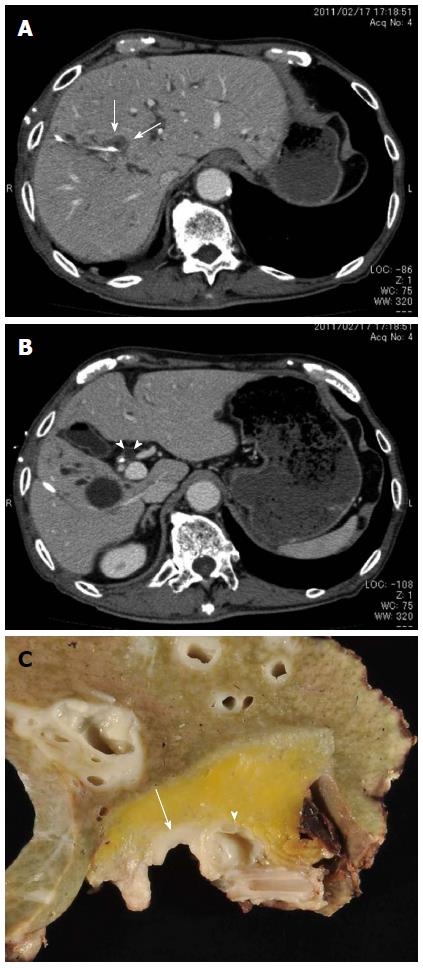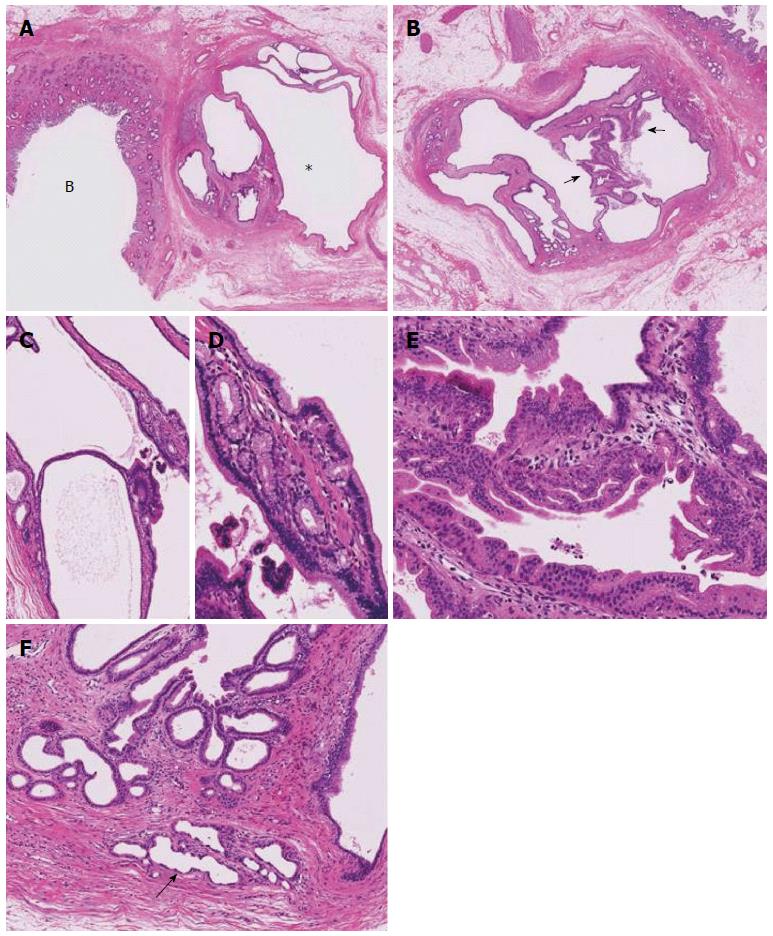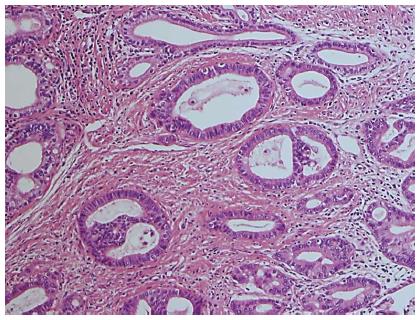Copyright
©The Author(s) 2016.
World J Gastroenterol. Feb 21, 2016; 22(7): 2391-2397
Published online Feb 21, 2016. doi: 10.3748/wjg.v22.i7.2391
Published online Feb 21, 2016. doi: 10.3748/wjg.v22.i7.2391
Figure 1 Preoperative images.
A: Enhanced computed tomography showing a 2.2-cm low-density tumor (arrows) in the right hepatic hilum. The white tube is the percutaneous transhepatic biliary drainage tube; B: Enhanced computed tomography showing a cystic lesion (arrowheads) by the common bile duct; the endoscopic nasobiliary drainage tube appears as a white dot. A solitary cyst can also be observed in the right lobe; C: Surgically resected specimen showing a cystic lesion (arrowhead) in the hilar connective tissue near the common bile duct involving the carcinoma (arrow).
Figure 2 Pathological findings.
A: Low-power histologic image of the same region showing a multilocular cystic lesion (*) and the common hepatic duct involving the carcinoma; B: Another level of a cystic lesion shows a multilocular cystic lesion with some areas exhibiting a micropapillary pattern (arrows), HE; C: The multilocular parts show fine septae lined by columnar epithelium, HE; D: The lining epithelium is columnar with clear cytoplasm, and a pyloric glandular pattern is visible underneath, HE; E: Micropapillary patterns, HE; F: The border of the cystic lesion is rimmed by non-neoplastic peribiliary glands (arrow), HE. HE: Hematoxylin and eosin.
Figure 3 Well-to-moderately differentiated tubular adenocarcinoma of the perihilar bile duct (hematoxylin and eosin).
Figure 4 Immunohistochemistry of papillary neoplasm and Perihilar cholangiocarcinoma.
- Citation: Uchida T, Yamamoto Y, Ito T, Okamura Y, Sugiura T, Uesaka K, Nakanuma Y. Cystic micropapillary neoplasm of peribiliary glands with concomitant perihilar cholangiocarcinoma. World J Gastroenterol 2016; 22(7): 2391-2397
- URL: https://www.wjgnet.com/1007-9327/full/v22/i7/2391.htm
- DOI: https://dx.doi.org/10.3748/wjg.v22.i7.2391












